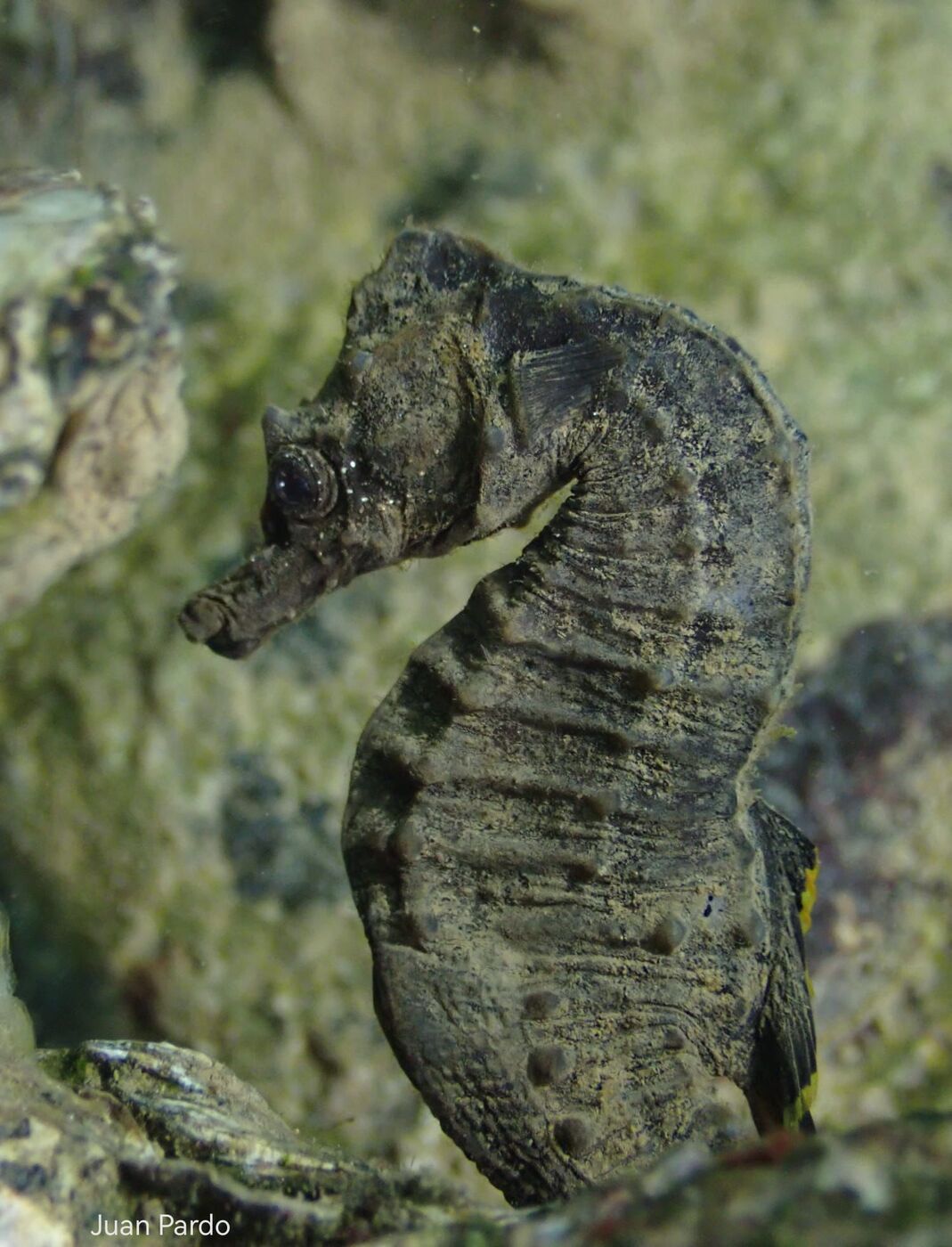Seahorses: surprising and unique
Seahorses are fish, although their appearance and behavior make them unique in the animal kingdom.

Difficult to detect, deeply adapted to their environment, and with surprising biology, they are one of the most charismatic and mysterious species found under the sea.
Morphology: An Unusual Shape for a Fish
Unlike most fish, seahorses swim upright, with their bodies covered in bony rings and a prehensile tail that they use to cling to algae, marine plants, rocks, or even motionless animals.
Their dorsal fin is primarily responsible for movement, moving with rapid, undulating vibrations that allow them to move slowly. The shape of their head resembles the profile of a horse, and their tube-like mouth is specialized for sucking in small invertebrates floating nearby.
Most of the time, they remain still and camouflaged, waiting for the current to bring some prey closer.
Active Camouflage: Invisible to the Human Eye
Seahorses have dorsal protuberances and the ability to change color, allowing them to blend in with their surroundings: posidonia, algae, gorgonians, or other elements of the seabed. This ability not only protects them from predators but also makes them true masters of stealth.
Reproduction: An Exceptional Case Among Fish
One of the most fascinating aspects of the seahorse is its reproductive strategy, unique in the animal world:
The female lays the eggs in an abdominal sac held by the male.
The male incubates the eggs in his belly throughout their development.
When the time comes, he expels the young through spasmodic contractions, which has given rise to the idea that "male seahorses give birth."
This phenomenon is rare in nature and makes the seahorse a model for studying reproductive biology.
A fragile species, a shared responsibility
Observing seahorses is a privilege that requires respect and knowledge. They are vulnerable to pollution, habitat destruction, and stress caused by human activity. Therefore, it is essential to:
- Do not touch or move them.
- Do not use flashes or direct light sources when photographing them.
- Do not reveal their exact location on social media or public forums.
Protecting them is key to preserving not only their species, but also marine biodiversity.

 en
en 














